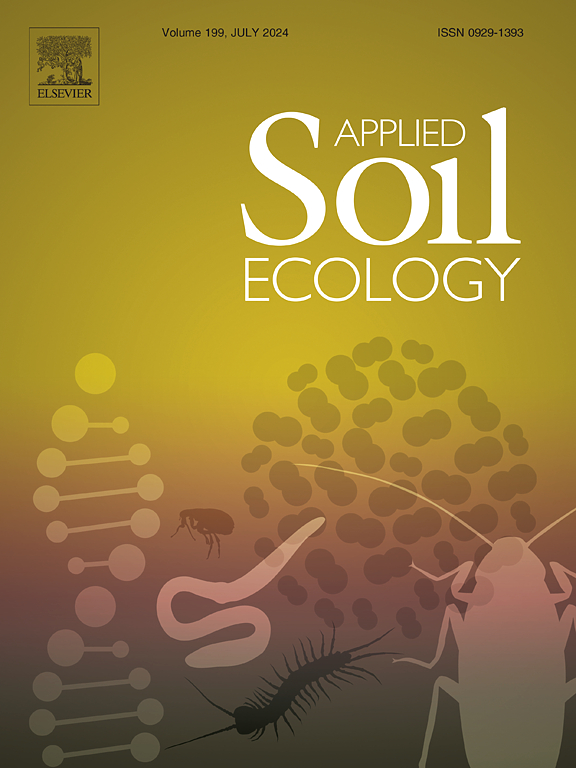Long-term fertilization legacy effects and temperatures regulate soil microbial function of crop straw decomposition in a greenhouse vegetable field
IF 4.8
2区 农林科学
Q1 SOIL SCIENCE
引用次数: 0
Abstract
Straw returned into field is a crucial practice for improving soil carbon sequestration and crop productivity. However, it remains unknow how fertilization legacy effects with different nitrogen (N) forms regulate the microbial communities and genes of straw decomposition under global warming. This study analyzed soils with 12 years of four fertilization regimes, including chemical-fertilizer-N (CF), 2/4 chemical-fertilizer-N + 2/4 manure-N (CM), 2/4 chemical-fertilizer-N + 2/4 maize-straw-N (CS), and 2/4 chemical-fertilizer-N + 1/4 manure-N + 1/4 maize-straw-N (CMS). Soils with 13C-labeled maize straw were incubated at 15, 25, and 35 °C, and microbial function involved in straw decomposition and nutrient stoichiometric mechanisms were explored using DNA-SIP combined with metagenomics analysis. Results showed that organic-materials N treatments, especially straw-amended N treatments (CMS and CS), improved cellulose decomposition by increasing β-glucosidase genes whereas decreasing endoglucanase and cellobiohydrolase genes. Organic-materials N treatments promoted hemicellulose degradation by increasing xylanase gene expression. Straw-amended N treatments facilitated lignin degradation by upregulating oxidase genes. These positive legacy effects were amplified with elevated temperatures and could be attributed to heterogeneity in straw-decomposing communities. Specifically, the abundance of Gemmatimonadetes and Betaproteobacteria increased with incubation temperature increased, whereas Alphaproteobacteria and Actinomycetia decreased. Organic-materials N treatments, especially straw-amended N treatments, increased the relative abundance of Actinomycetia, Gammaproteobacteria, and Gemmatimonadetes by 2.8 %, 2.7 %, and 39.7 % on average, respectively. Mantel's test further indicated that soil TOC, DOC, MBC, and C/N at different temperatures significantly promoted straw decomposition, with TN and C/P ratio being particularly influential at low and high temperatures, respectively. In conclusion, N fertilization modifies microbial communities and genes involved in straw decomposition through nutrient stoichiometry regulation. The rise in temperature decouples these relationships, highlighting the significance of applying organic-fertilizer-N to improve straw decomposition under global warming.
求助全文
约1分钟内获得全文
求助全文
来源期刊

Applied Soil Ecology
农林科学-土壤科学
CiteScore
9.70
自引率
4.20%
发文量
363
审稿时长
5.3 months
期刊介绍:
Applied Soil Ecology addresses the role of soil organisms and their interactions in relation to: sustainability and productivity, nutrient cycling and other soil processes, the maintenance of soil functions, the impact of human activities on soil ecosystems and bio(techno)logical control of soil-inhabiting pests, diseases and weeds.
 求助内容:
求助内容: 应助结果提醒方式:
应助结果提醒方式:


